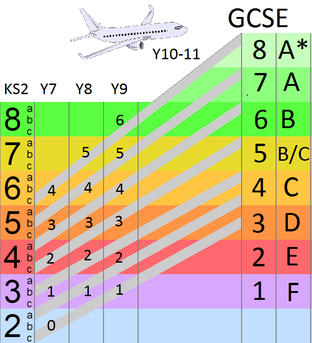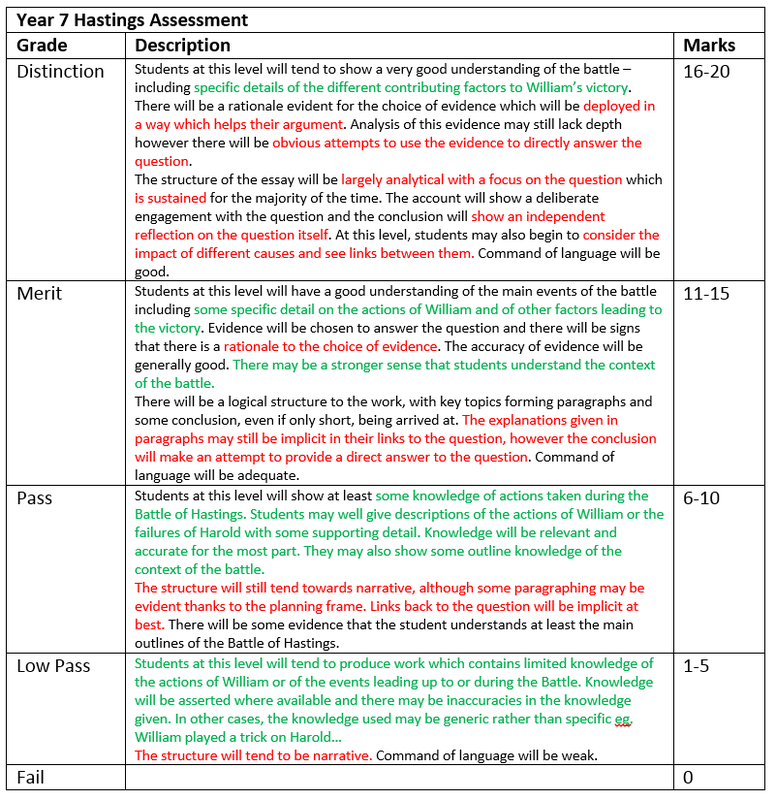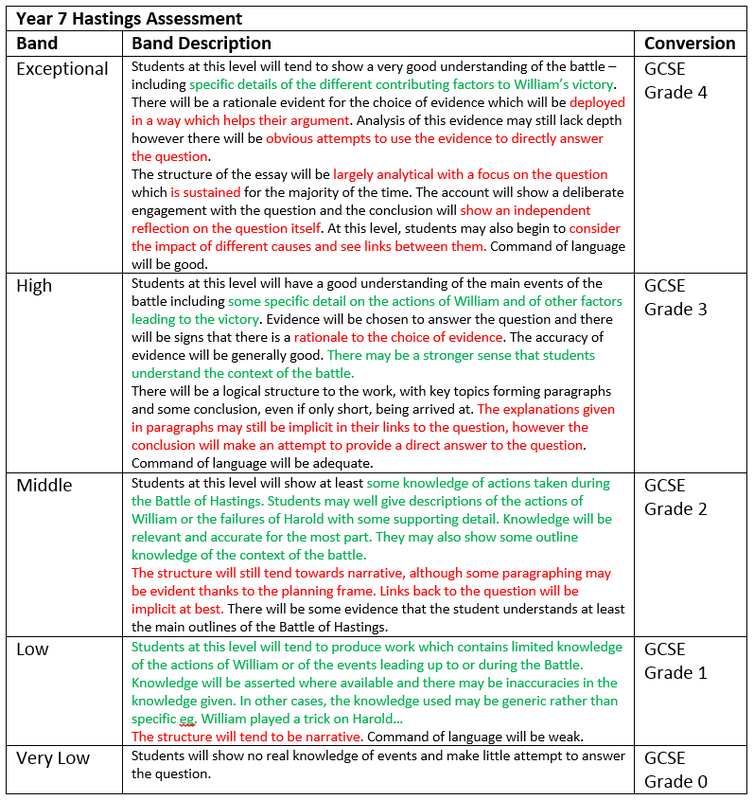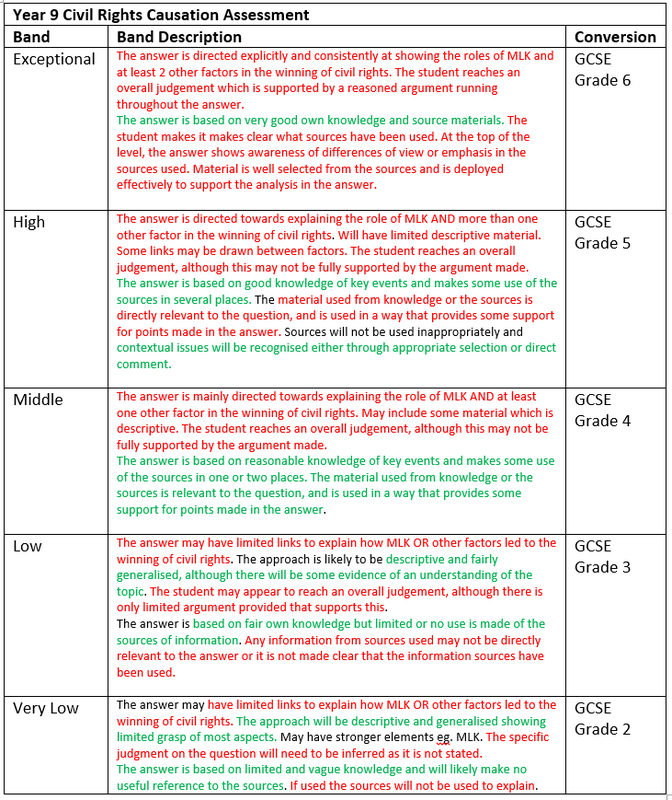Ever since the announcement of major curriculum changes back in 2012/13, I have received more and more contacts from teachers via the website. For the most part, these are what I like to call "messages in bottles", quite often fairly substantial missives from people looking for help and guidance relating to some crazy initiative or other being brought into a school. The other common contact is from new Heads of Department looking for some guidance in a school offering little support. It can be a very lonely world out there as a history teacher looking to meet personal, professional goals, whilst also meeting the expectations of school data and tracking systems. The fact that so many people seem to seek help from an ostensibly anonymous source like this one suggests that many of us are probably struggling with similar issues but don't know where to turn. I try to respond to all of these messages in bottles, not always with an answer, but just so people know they are not completely alone in their experiences.
As I typed my most recent response however, I got to thinking that the conversations I have with some of these people might well be of use to others in similar circumstances. I am therefore intending to anonymise and republish some of the conversations I have had on the most common topics of discussion in my new "Messages in Bottles" feature. It is my hope that others might then contribute their own responses in addition to my own advice. In this way I hope we might continue to develop and deepen our professional understanding through joint endeavour. Moreover it chimes with my previous blog that we have to keep talking about "History Club" if we ever want things to really change.
Today's letter is one of the most common I have seen from new HoDs and is one of the most frequent discussions I have with people at conferences and other events. I offer a modified and anonymised version of the contact I received as well as my response. Please feel free to add your own comments or disagree with my advice.
Help! My school is replacing Levels with GCSE Grades...
Dear Sir,
I have recently been made a subject leader for History. I have read a great deal on progression and assessment in history but have found myself at a difficult cross-roads. Our school will be implementing a system where students in KS3 and 4 will all be graded on the new GCSE Grades 9-1 system. I have been given the daunting task of constructing what our 9-1 will look like for KS3 and 4. This has been difficult as 1) Ofqual release little-to-no information on what this should look like 2) it's disheartening knowing that whatever work I do on it, will have to be scrapped to match whatever information may be released by Ofqual/exam boards in the future, and inevitably will have to re-do it!
I now have a large disconnect between much of the work on assessment, which suggests creating level "ladders" is not good practice. However I am not sure what to do to create something which might both satisfy my SMT and also make for good historical assessment. I am torn between two opposing principles that seemingly cannot work!!!
Would you mind at all contacting me to perhaps advise/guide/direct me on how to go about this? Is this something you are doing for your school for September? I am a new subject leader, and have only been teaching for 2 years - and have worked incredibly hard on my own to make sure our history has fantastic schemes of work, drive amongst our students - but this 9-1 has thrown a huge spanner in the works! (If any of this makes sense - and is clearly not just a sense of ramblings from a confused history specialist!!!).
Regards, X
Response
 A "flightpath" of KS2 levels to GCSE grades
A "flightpath" of KS2 levels to GCSE grades First of all congratulations on your promotion to Head of History. For all its pitfalls it is a very exciting role to take on and gives you a real opportunity to shape the kind of history students experience at your school.
Your school is far from alone in implementing the GCSE grades 9-1 as a measure of progress across KS3 and 4. My major worry with this, as you are probably aware, is that this does not help to create a meaningful progression model for students over the key stages. Rather it recreates those artificial steps from KS3 levels. Moreover it does not recognise that the content gets more complex as students move on, therefore the only system which would really function well would be one which allowed students to attain a GCSE Grade 5 in Year 7, 8 and 9 and be seen as making progress as the content had become more difficult. Sadly, I doubt this is where the whole thing is heading! My number one piece of advice would therefore be to present the failings of such a system clearly to SMT and hope for a change.
A good way to illustrate the issue is by getting SMT to try to apply the criteria themselves. The GCSE History Assessment Objectives (AOs) are formed of only 4 short statements. If your SMT want you to base everything around these, then they will of course be the centre of any "progression model" from grade 9-1, despite the fact they were clearly not designed for this purpose. To take one example, AO2 states that students should... “Explain and analyse historical events and periods studied using second-order historical concepts.” This in itself is very vague (which concepts for example?) but how would it be split down to make a "progression model"? I have outlined one possibility below:
- L9 AO2 = Explain and analyse historical events and periods using second-order historical concepts.
- L8 AO2 = Explain historical events and periods using second-order historical concepts
- L7 AO2 = Explain most historical events and periods… etc
- L6 AO2 = Explain some historical events and periods…
- L5 AO2 = Badly explain (?) historical events an periods…
- L4 AO2 = Describe (?) historical events and periods…
- L3 AO2 = Describe some historical events….
- L2 AO2 = Inaccurately describe some historical events…
- L1 AO2 = Identify some events…
This is evidently very vague and to be frank provides very little by way of example of how students might improve at history - something you could clearly show. You could of course opt to split this down further to add some complexity to the statements. In which case you may end up with something like this:
- L9 AO2.1 = Explain and analyse causation by making clear links between causes and showing the complexity of historical causation.
- L9 AO2.2 = Explain and analyse continuity and change by showing the complexity of change over time and recognising that change and continuity ebb and flow.
- L9 AO2.3 = Explain and analyse the historical significance of people and events by referring to a refining critieria such as the 5Rs to create clear and cogent explanations….
- L9 AO2.4 etc. etc.
As you can see the task becomes impossible and the hierarchy created is nonsensical as it does not help students improve (Get your SMT to try and write the hierarchy – see how well they do). Moreover, I imagine Y7 students might be expected to sit on the spectrum at Level 2/3 and move up. Why on earth would we teach our Y7s to do anything other than explain and analyse the events they studied. I would expect good Y7s to be able to hit the top (L8/9) criteria for this in work on the Battle of Hastings for example. Of course the content they studied would be far less complex than that studied by someone in Y11, but this difference is not recognised by this approach. Indeed, it is often overlooked that a GCSE has a set list of content to cover which is then married up with the conceptual understadning to create assessments. As there is no fixed KS3 content to cover it cannot be assessed against generic criteria like this. A Year 7 might for example explain the impact of the Norman Conquest in terms of the building of castles and changes in the power structure of England. A Year 11 might do the same but add in the complexity of shifting relations between different groups, or note the religious changes brought by the Normans and their contextual importance. There is also the great danger of the grade nuclear arms race, when teachers keep pushing up student grades to meet or exceed targets. In short, the whole thing will be an almighty mess.
The same is true of the other 3 AOs for history. They all offer generic descriptions of what second order concepts students should grasp but they do not refer to content as this is defined in the GCSE specification documents. Maths on the other hand will have defined content in its spec document and therefore be able to work this. My first action would be to make this case.
Just for reference, here are the other AOs:
What if they don't buy it?
There are three things I would produce for this. Number 1, I would have a second-order concept progression model for use in your own planning – something like the mastery model I have discussed in the past. Secondly I would have a clear map of the content students are covering from Year 7-11 showing the first order concepts students are grasping at various points and mapping the knowledge more generally being developed (big stories, knowledge of people and events, knowledge of context etc). This is essentially how you will be measuring students’ progress as teachers and as a HOD. Then I would create a 9-1 generic scheme which tallies directly with what your SMT wants but is effectively lip service. Keep this generic but unobtrusive eg.
- Level 9 – Students have grasped key content and knowledge to a standard well beyond expectations the best Year 11s.
- Level 8 – Students have grasped key content and knowledge to a standard beyond expectations the best Year 11s.
- Level 7 – Students have grasped key content and knowledge in line with expectations for the best Year 11s.
- Level 6 – Students have grasped key content and knowledge in line with expectations for most Year 11 students.
- Level 5 - Students have grasped key content and knowledge in line with expectations for most Year 10 students.
- Level 4 - Students have grasped key content and knowledge in line with expectations for most Year 9 students.
- Level 3 - Students have grasped key content and knowledge in line with expectations for most Year 8 students.
- Level 2 - Students have grasped key content and knowledge in line with expectations for most Year 7 students.
- Level 1 - Students have grasped key content and knowledge in line with expectations for most Year 6 students.
By keeping this very generic you can then note when students are meeting, falling below, or exceeding year specific expectations (which is all the 9-1 system really tells you). You can then have specific tasks and assessments to discuss with parents. Your assessments will need their own mark schemes which bring together items 1 and 2 (the progression model and the content knowledge). In the examples below I have highlighted the second order concepts in red and the knowledge in green. The knowledge would refer back to the scheme of work – I have chosen not to include examples in these mark schemes. This of course is the crucial bit as it is where the actual history comes in. This goes back to the brilliant work done by Burnham and Brown. You would of course need a specific mark scheme for each and every assessment. Personally I would keep this with a separate mark scheme like the one below ie. Fail, Pass, Merit, Distinction:
Alternatively you could have a GCSE grade mark scheme for each assessment like the ones below. Here you would need to ensure that the mark schemes tied in with expected progress ie. the middle band should be in line with the progress model being proposed by the school. This is my less preferred option but still allows you to have a proper progression model underpinning things.
Sometimes this compromise approach is necessary, particularly if you are new in post, or if your SMT has already gone a long way down a particular line. However I would always recommend the first course of action in the first instance as quite often too little thought has gone into assessment systems in schools. Sometimes the pit falls are not noticed until the system is well underway. Point the issues out now and you may well be rewarded with that bit of extra freedom.
Best of luck and kind regards,
Mr F





 RSS Feed
RSS Feed
